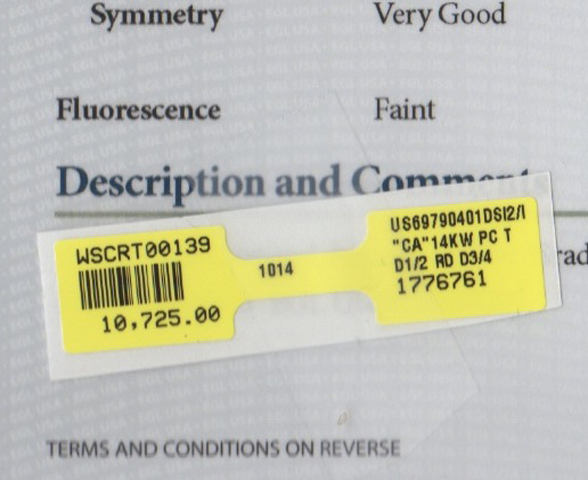Black Friday Diamond Deals
January 8th, 2015 by James L. Sweaney, CGA, FGA. GGAs members of the American Gem Society, we at Mardon Jewelers are committed to conducting our business ethically. Key tenets of the AGS are that the ethical business person never knowingly misrepresents the facts or intentionally deceives other parties. From our AGS Membership Manual, these are the first 3 of 15 specifically prohibited business practices.
1. Advertising which in any way is not the truth or has the intent to be misleading.
2. Following a policy of regularly selling merchandise at prices lower than those at which it is marked or conducting repeated discount sales and discount promotional events as an on-going policy.
3. Advertising or setting artificially high prices as the “regular price” to allow either a fictitious sale price or supposed discount “mark down” lower than the original price.
Not only are we committed to fair pricing and ethical business practices, we’re also dedicated to consumer protection and education. One of the main reasons we decided to invest our time and energy publishing this blog is to offer our readers and clients quality information about both the good and the bad in our industry.
Just before Christmas, a lady asked us to appraise this set of wedding rings for insurance. Her fiancé had purchased the set as a Black Friday discount deal. The client didn’t have the EGL USA report shown here at the time she brought us the ring.
We did our usual thorough workup, photographing the item, measuring and weighing the set. We had two gemologists grade the diamonds with particular focus on the center stone which accounts for much of the value. We graded the center diamond as K color, SI2, and the small diamonds at K to M color (noticeable yellow tint), SI clarity. Our appraised retail replacement value, based on the facts we determined and on normal markups for retail prices, was ~ $3400 plus sales tax.
Our client wasn’t happy with our valuation. She told us her fiancé had paid over a thousand dollars more for the set during a Black Friday sale right after Thanksgiving. He got a big discount, of the 50% off nature– where have we heard that before!!!
This episode illustrates two of the most common problems we as ethical jewelers deal with all the time. The first is a big problem — fictitious pricing. By this we mean setting excessively high prices that items would never sell for, but allow the vendor to create the illusion of big discounts so the buyer thinks he’s getting a great deal.
This set was purchased from a chain store that does lots and lots of TV advertising during the holiday seasons. You’ll notice the yellow sticker price of $10,725 on this cert.
The facts are that the manufacturer’s cost for the 14K gold in this set was approximately $150. Using the grading from the certificate provided, the 1/2 ct princess cut center would cost ~ $550 wholesale (dealer to dealer), and the 3/4 ct of small diamonds would cost ~ $275 wholesale, for a total cost for materials at the wholesale level of ~$975. Since much of the jewelry like this sold in the mass market is manufactured in Asia where labor costs are rock bottom, you can assume that the retail store probably paid no more than $1200 to $1500 for this set.
Would you pay $10,725 for this item?
We’re sure the retailer was very happy selling the item for $5000. Do the math– that would be a markup of ~300% over cost.
Unfortunately, fictitious pricing is rampant in our society, not only in the jewelry industry but also in many businesses selling to consumers. As a consumer, it’s very hard to resist the illusion that you’re saving thousands of dollars while getting what you want. While consumers bear some responsibility for chasing “Deals”, the fault lies mainly with sellers who participate in deceptive business practices.
Tags: American Gem Society, ethical jewelers, fictitious pricing, prohibited business practices










